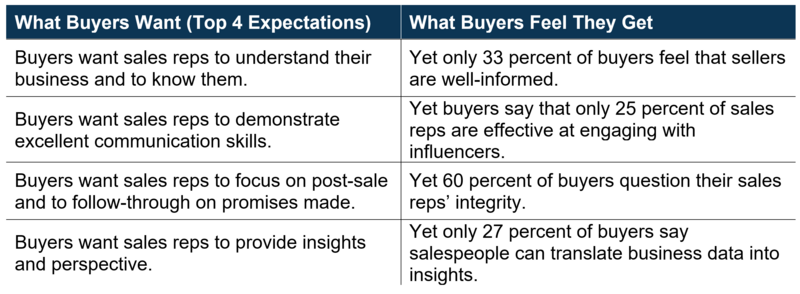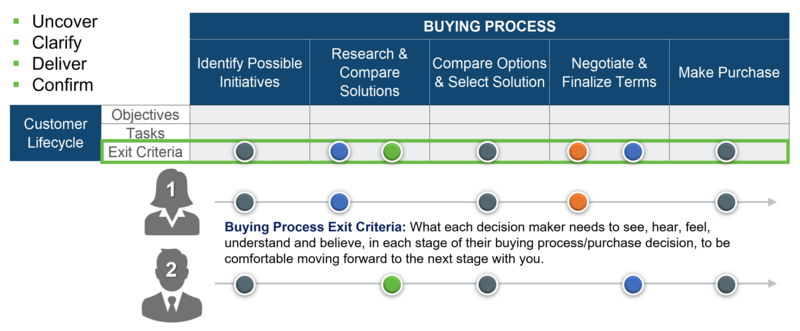ATD Blog
Evolve to a Buyer-Centric Selling System to Transform Your Sales Results
Fri Sep 25 2020

The need to be buyer-centric isn’t really new, right? Yet, it may be the most important thing you can do to radically transform your sales force and the results they produce for your company.
Why Now?
We talk about how quickly things change, but real change—deep change—often occurs slowly. There are many prominent and unfortunate examples of this in our society. In organizations, that we require diversity and inclusion initiatives and discussions about gender pay gaps is evidence of how slowly things change, especially when mindsets and behaviors are involved.
The Past
It’s no different for the sales profession. This year is the 50th anniversary of the first edition of Mack Hanan’s landmark book Consultative Selling. Mack’s method was buyer-centric, value-focused, and outcome-oriented, and it changed the way I viewed professional selling. Mack published several more editions before his passing in 2010: Conceptual Selling, Strategic Selling, Integrity Selling, Professional Selling Skills, SPIN Selling, Collaborative Selling, Customer-Centric Selling, Value Selling, and other buyer-centric methodologies.
The Present
Despite the efforts of so many sales thought leaders, recent B2B buying research consistently points out how disappointed buyers are with sellers. This isn’t to say that great, buyer-centric sellers don’t exist. They do and they produce outstanding results for their companies. They’re often the top 20 percent producers or even the top 4 percent producers (the top 20 percent of the top 20 percent). But on average, we’re not doing so well. In many sales forces, the analysis of production levels is actually more of a power law distribution than a bell curve.
In 2019, as we were developing Modern Sales Foundations, my colleague Doug Wyatt and I juxtaposed the data from two research studies conducted by CSO Insights and ValueSelling Associates. What we learned was alarming.

In addition, in the CSO Insights’ study, buyers also shared when they first make contact with suppliers and sellers:
70 percent wait until after they have fully defined needs
44 percent wait until they have identified possible solutions
20 percent reach out just to lock down the details of their purchase
These are just two studies, but there are many more. And while the results vary by vertical industry and company by company, this is bad news overall for the profession.
The Future
There is good news, though. While it’s likely that transactional sellers will be disrupted and displaced over time, much like the disruption we saw with travel agents in the early 2000s, the future of consultative sellers is far brighter if we can make the buyer-centric shift. Travel agents still exist for those who want a more authentic or guaranteed experience than self-service booking tools can offer. They also work for corporations who want to ensure the lowest travel costs possible with good support for their employees. I believe the same will be true for B2B sales. Buyer-centric, consultative sellers who solve problems for their buyers will survive and thrive.
In the sales profession, we are near what Malcolm Gladwell calls a “tipping point” in which buyer-centric approaches will be demanded and will become “the ticket for entry” to working with modern buyers.
What Exactly Is a Buyer-Centric Selling System?
OK, so there’s hope. But what exactly is buyer-centric selling?
Buyer-centric selling is:
Consultative, value-based, and outcome-oriented selling
Molded to work with modern buyers in our current business climate
To help buyers buy, in an informed way, to achieve the desired outcomes that matter to them
Buyer-centric selling is about teaching sellers to sell the way modern buyers want to buy.
At the same time, it’s not about being a pushover, namby-pamby, or subservient. It’s about operating in your buyer’s best interest. And sometimes that may mean you need to question their thinking or share perspectives that are different from theirs. But you are always doing it with their best interest at heart. You pay attention to what matters most to different buyers you’re working with and message appropriately to them based on what they value and want to accomplish. This helps buyer-centric salespeople earn their buyers’ trust and become real problem-solvers for them. In a nutshell, that’s what it’s all about. It’s finding buyers with problems you can solve and selling to them in ways that buyers want to buy.
To do this, sellers must shift to an outside-in way of thinking and working. To be successful, you really need to infuse buyer-centric thinking and behavior into everything you do.
Buyer-Centric Sales Process and Methodology

You can infuse it into your sales process and methodology by understanding your buyers and customers better than anyone else can.
You do it by personalizing messaging based on what they value and what matters most to them, and by working with them to create solutions.
Managing Buying Process Exit Criteria

You can infuse buyer-centric thinking and behavior into your sales process with a focus on uncovering and clarifying each decision maker’s buying process exit criteria, delivering what they need and confirming that what you provided satisfies their criteria. Remember, each buyer’s exit criteria can be different. Many will likely be similar but you should avoid selling by superstition, which means doing the same things the same way each time and hoping it works. If you work to understand the criteria in each stage for each decision-maker and influencer, this will differentiate you and improve your win rates.
Fostering Human Differentiators
Being buyer-centric is also about fostering and maximizing human differentiators. These include the interpersonal, cognitive, and relationship-enhancing skills that build trust with buyers, earn respect, add value, and further differentiate you from sales hunters who see everyone who walks as a demo prospect.

This advice introduces the elements of a buyer-centric selling system, but there is more to it. I’ll supplement this post with my presentation at the virtual ATD SELL Conference this year, which will run October 12–15. During my presentation, I’ll also share how to guide your sales force on their journey to transform into fully buyer-centric sellers.
Learn more about ATD SELL here. You can save $50 by using discount code SELL20SPEAK.
